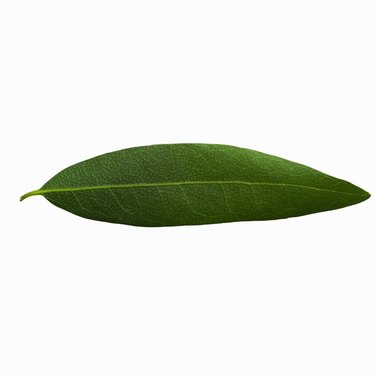
Bay leaves, which grow on the sweet bay or laurel tree, were used in ancient Rome to make laurel wreaths. Today, the bay leaf is more often found as a seasoning agent in stews or soups than on someone's head. Contrary to a popular belief, fresh or dried bay leaves are not poisonous, according to Marissa Ponikowski of the Food Network Canada, although they can have unpleasant effects if eaten.
Taste
Video of the Day
Bay leaves have a bitter, sharp, pungent taste. The bay leaf, or Laurus nobilis, is the only member of the laurel plant family that is edible, which is most likely where the idea that bay leaves also are poisonous came from. Similarly named plants such as cherry, English, mountain and sheep laurel are poisonous, according to Union County College.
Video of the Day
Texture
Bay leaves are very tough and have a woody stem. The edges of the leaf are quite sharp and don't break down well during cooking. If you eat fresh or dried bay leaf, the rough edges could cut your mouth or throat. If you swallow a fresh, dried or cooked bay leaf, it could get stuck in your throat, since bay leaves are very hard to chew. Remove the bay leaf at the end of cooking not only to avoid a choking hazard but also to keep the strong flavor from overpowering your dish.
Medicinal Uses
Bay leaf is used as an herbal medicinal treatment for stomach ailments and as an aid to digestion, the Monadnock Herbal Society claims.
Considerations
For a spice used to season numerous dishes, bay leaves have an undeservedly frightening reputation. While fresh bay leaves are hard to find, according to Ponikowski, specialty food stores might carry them in late summer and fall. Do not eat bay leaves from trees unless you're certain that what you have is Laurel nobilus, since other types of laurel can be poisonous. If you're not positive what type of tree you have, take a branch to a nursery or arborist for verification. It's safer to buy your bay leaves from the store if possible, the University of Florida recommends.